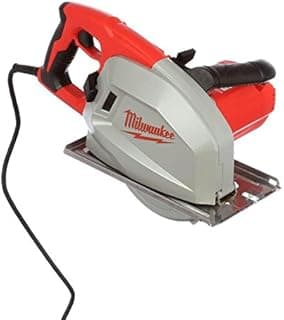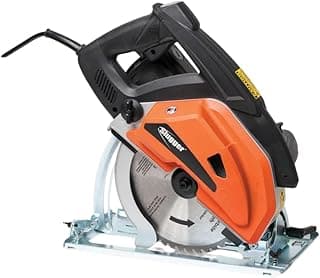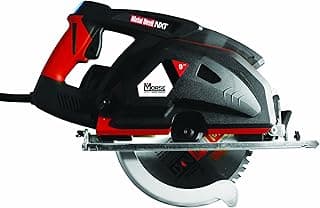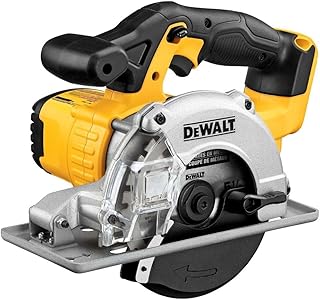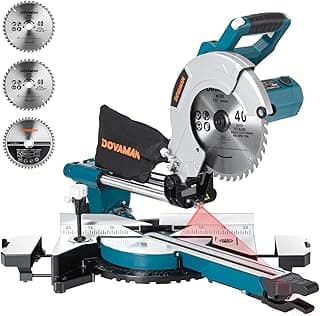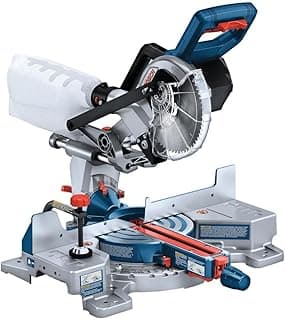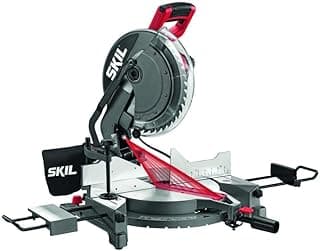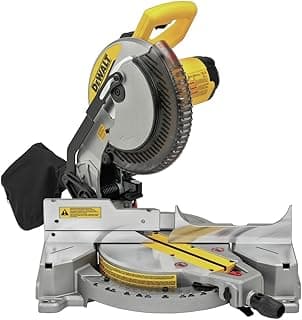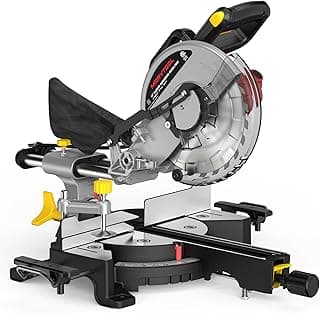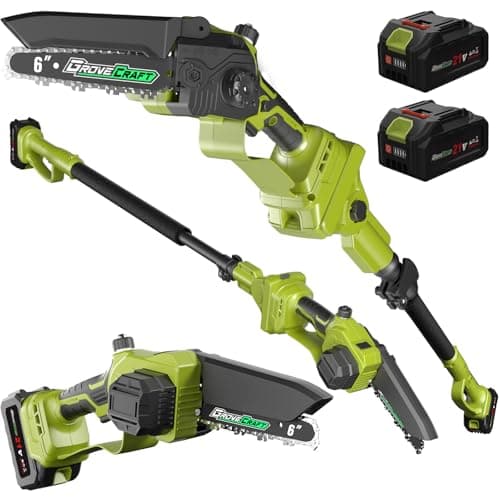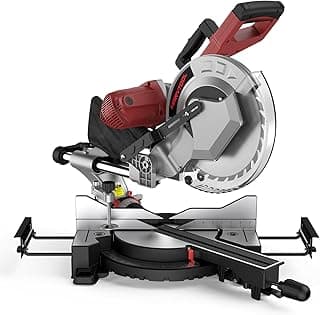Cutting through metal requires more than just power — it demands precision, the right blade, and a tool built to last. That’s why choosing the best metal circular saw is essential for professionals and DIYers alike. But how do you know which one stands out? Let’s dig in.
Before you decide, it’s worth considering the best size circular saw for your projects. Blade size impacts both depth and control, especially when working with thick materials. Also, pairing your saw with the best guide rail for circular saw ensures straighter, safer cuts. And of course, exploring the best circular saw models overall helps you understand how metal-specific versions differ from standard woodworking saws.
Ready to find the perfect tool for cutting metal like a pro? Let’s get started.
Top Picks
Best Metal Cutting Power: Milwaukee 6370-21 13 Amp 8" Metal Cutting Circular Saw
The Milwaukee metal-cutting saw delivers strong, consistent performance thanks to its 2990-watt motor and 230-volt power supply. Built for industrial-grade applications, it uses a Cermet blade designed to handle tough metal surfaces with precision and minimal wear. The 24-tooth blade and rectangular shape ensure smoother cuts and less heat buildup, which enhances blade life. Its solid construction and rubber or plastic handle offer stability and comfort, while the product’s adherence to general safety and quality standards ensures reliable operation in demanding conditions.
From a customer’s perspective, the saw stands out for its power and durability—ideal for heavy-duty tasks where accuracy and endurance matter. Users appreciate its ability to cut through thick metal quickly and cleanly, reducing downtime. However, its 27-pound weight may limit portability, making it better suited for workshop use than on-the-go projects. Overall, it’s a dependable tool for professionals who value cutting strength and longevity over lightweight convenience.
Best Cordless Metal Saw: DEWALT 20V MAX XR 7-1/4 in. Metal Cutting Circular Saw
The DEWALT 20V MAX metal cutting circular saw is built for professionals who need high performance in a portable design. Powered by a brushless motor delivering up to 1,400 MWO, it handles demanding metal cutting applications with ease. The 2-5/8-inch depth of cut offers excellent versatility, allowing users to work through steel studs and corrugated decking efficiently. The integrated chip collector keeps the workspace clean, while the electronic brake provides added safety by stopping the blade in under a second.
From a user standpoint, this cordless saw combines mobility and power effectively. Contractors appreciate its cutting precision, reduced maintenance from the brushless motor, and the convenience of DEWALT’s Tool Connect+ technology for tracking and management. While some may find battery life limiting during extended projects, its efficiency and smart features make it a top choice for professionals seeking a reliable and modern metal-cutting solution.
Best Precision Metal Saw: Bosch GKM18V-20N-RT 18V Lithium-Ion 5-3/8 in. Cordless Metal-Cutting Circular Saw
The BOSCH cordless metal-cutting saw is engineered for precision and durability in professional environments. Its motor delivers up to 4,250 RPM, enabling smooth, efficient cuts through conduit, steel studs, and other metal materials. The adjustable stainless steel footplate ensures stability and accurate cutting depth, while the integrated chip collector minimizes cleanup time. A clear, impact-resistant window enhances visibility, and the built-in LED light allows accurate operation in dimly lit workspaces.
From a customer perspective, this BOSCH saw earns praise for its cutting accuracy, ergonomic balance, and jobsite-ready durability. The thoughtful design features—such as the saw hook for quick storage and chip management system—add convenience to everyday use. However, with a 2-inch cutting capacity, it may not suit heavy industrial applications. Still, for electricians, HVAC professionals, and contractors needing clean, precise cuts on lighter metal materials, it’s a dependable and efficient tool.
FAQs
Is 18 or 24 TPI Better for Metal?
TPI stands for “teeth per inch,” and it’s a critical factor when cutting metal. In general, 18 TPI blades are better for cutting thicker metals like steel pipes or rebar because they remove material faster and prevent overheating. On the other hand, 24 TPI blades are ideal for thinner metals such as aluminum sheets or conduit, delivering smoother, cleaner cuts with less burr.
In short, use 18 TPI for thick metal and 24 TPI for thin metal. Matching the right TPI to the material not only improves cut quality but also extends the life of your blade.
What Circular Saw Blade to Cut Metal?
When cutting metal, you’ll need a specialized metal-cutting blade — not a standard wood blade. The two most common types are:
-
Carbide-tipped blades – Designed for cutting through steel and other ferrous metals. These blades stay sharp longer and reduce sparks.
-
Abrasive cutoff blades – Better for thin metal sheets or rebar, though they wear down faster.
For best results, choose a carbide-tipped, 48-tooth or higher blade rated for ferrous metal cutting. Always check your saw’s RPM compatibility before use to ensure safety and performance.
Can I Cut Metal with a Circular Saw?
Yes — but only if it’s designed for metal. Standard wood circular saws lack the torque control, guard design, and cooling systems needed for cutting metal safely. A metal circular saw features lower RPMs, spark-resistant guards, and reinforced housings to handle the heat and friction from metal cutting.
If you must use a regular saw, attach a metal-cutting blade and take precautions: wear safety goggles, gloves, and ear protection. However, for frequent or heavy-duty cutting, a dedicated metal-cutting circular saw is the safer and more efficient choice.
What Is the Best Tool to Saw Metal?
The best tool depends on the type and thickness of metal you’re cutting:
-
Circular saw – Excellent for straight cuts on sheet metal and tubing.
-
Angle grinder – Ideal for smaller pieces or rough cuts.
-
Bandsaw – Best for thick or irregular shapes, offering precision and control.
-
Reciprocating saw – Suitable for demolition or cutting metal pipes in tight areas.
For versatility and speed, a metal-cutting circular saw is often the top choice for both pros and serious DIY users. It combines precision with power while minimizing heat buildup and material distortion.
Final Thoughts
Choosing the best metal circular saw isn’t just about brand or price — it’s about matching the right power, blade, and safety features to your needs. Understanding TPI, blade types, and tool compatibility ensures smooth, clean cuts and long-lasting performance. Whether you’re slicing through steel or trimming aluminum, the right metal circular saw transforms tough jobs into clean, efficient work.

